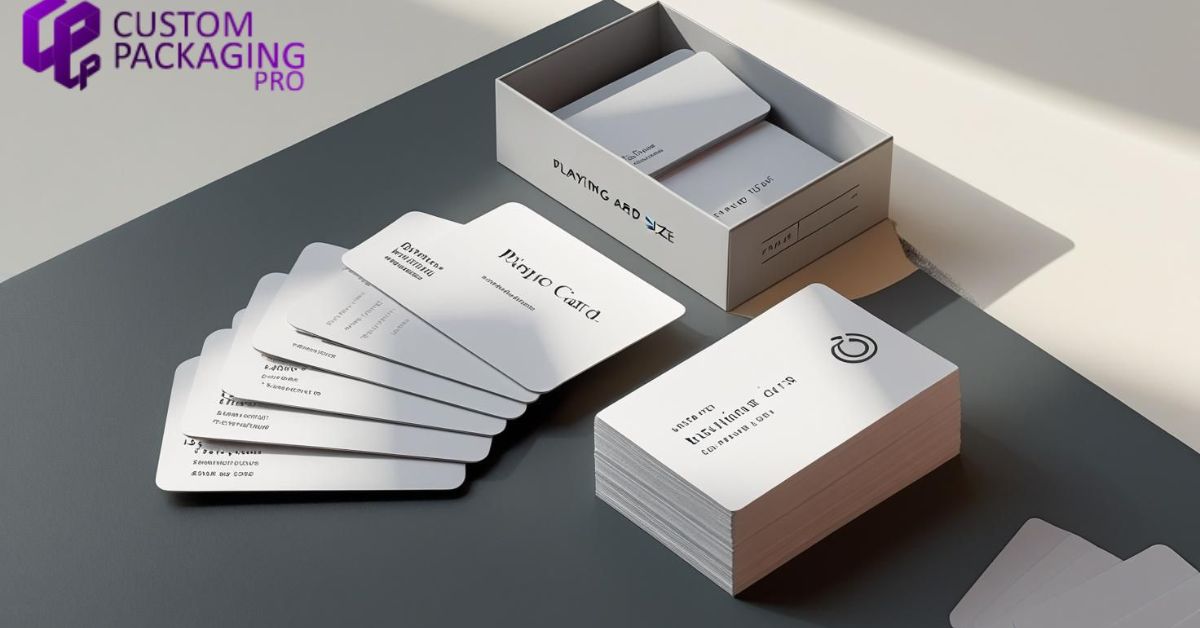BUSINESS
Top Questions to Ask Your Home Inspector in Michigan

Buying a home is one of the most significant investments you’ll ever make, and ensuring that your potential new home is in good condition is crucial. This is where a home inspection comes in. Whether you’re a first-time homebuyer or have gone through the process before, hiring a home inspector in Michigan is essential for uncovering any hidden issues. But what should you ask your home inspector to make sure you’re getting a thorough inspection? In this comprehensive guide, we’ll cover the top questions to ask your home inspector in Michigan and explain the implications of various findings. By the end, you’ll be well-equipped to navigate the home inspection process with confidence.
Why Is a Home Inspection Important?
Before diving into the specific questions, let’s briefly discuss why a home inspection is so important. According to the Compass Property Management team, a home inspection can reveal potential problems with a property that may not be visible during a regular viewing. Issues with the foundation, roof, plumbing, electrical systems, and more can be uncovered, allowing you to make an informed decision about whether to proceed with the purchase or negotiate repairs.
Top Questions to Ask Your Home Inspector
1. What Does Your Inspection Cover?
It’s important to understand what the inspection will and won’t cover. Home inspectors typically follow a standard checklist, but knowing the specifics helps you manage expectations.
Implications: By knowing what is covered, you can identify any potential gaps in the inspection and decide if additional specialized inspections (such as for radon, mold, or asbestos) are necessary.
2. Are You Licensed and Insured?
In Michigan, home inspectors are not required to be licensed, but many professional inspectors choose to obtain certifications to demonstrate their expertise.
Implications: A licensed or certified inspector is likely to have a higher level of training and professionalism. Insurance protects you from liability if the inspector is injured on your property or if they miss a significant issue during the inspection.
3. How Long Have You Been Inspecting Homes?
Experience matters. An inspector with years of experience is more likely to have encountered a wide variety of issues and know what to look for.
Implications: More experienced inspectors can provide more detailed insights and may be better at identifying subtle problems that a less experienced inspector might miss.
4. Can I See a Sample Report?
Reviewing a sample report can give you an idea of how thorough the inspector is and how they present their findings.
Implications: A detailed, easy-to-understand report is crucial for making informed decisions. Look for clear descriptions, photos, and recommendations.
5. How Long Will the Inspection Take?
The duration of the inspection can vary based on the size and condition of the home.
Implications: A thorough inspection usually takes several hours. If an inspector claims they can complete the inspection in a very short time, it may be a red flag that they are not being thorough.
6. Can I Attend the Inspection?
Being present during the inspection allows you to see any issues firsthand and ask questions on the spot.
Implications: Attending the inspection helps you better understand the condition of the home and the significance of any issues found. It also provides an opportunity to learn about the home’s systems and maintenance needs.
7. What Are the Major Issues You’ve Found in Similar Homes?
An inspector familiar with homes in your area can provide insights into common problems specific to the region or construction style.
Implications: Knowing common issues can help you be more prepared for potential repairs and maintenance. For example, older homes in Michigan might have issues with outdated electrical systems or poor insulation.
8. Do You Offer Any Warranties or Guarantees?
Some inspectors offer limited warranties on their inspections, providing additional peace of mind.
Implications: While not all inspectors offer this, a warranty or guarantee can provide some protection if a major issue is discovered after you move in.
9. How Soon Will I Receive the Report?
Timeliness is important, especially if you’re working within a tight closing timeframe.
Implications: Receiving the report quickly allows you to address any issues promptly, whether that means negotiating with the seller or planning for repairs.
10. What Should I Be Concerned About?
After the inspection, ask the inspector to summarize the most significant issues they found.
Implications: Understanding the major concerns helps you prioritize repairs and negotiate effectively with the seller.
Understanding Common Findings and Their Implications
Structural Issues
Cracks in the Foundation: Cracks can indicate settling or more serious structural problems. Small cracks may be normal, but larger or expanding cracks need further evaluation.
Sagging or Uneven Floors: These could be signs of foundational issues, water damage, or problems with the home’s support structure.
Implications: Structural issues can be costly to repair and may affect the safety and stability of the home.
Roofing Problems
Missing or Damaged Shingles: These can lead to leaks and water damage.
Improper Flashing: Poorly installed or damaged flashing can cause water to seep into the home.
Implications: Roofing issues can result in significant repair costs and potential water damage to other parts of the home.
Plumbing Concerns
Leaky Pipes: These can lead to water damage, mold growth, and higher water bills.
Old or Failing Water Heaters: An old water heater may need replacement soon.
Implications: Plumbing problems can range from minor leaks to major issues requiring extensive repairs.
Electrical Issues
Outdated Wiring: Older homes may have outdated wiring that poses a fire risk.
Improperly Installed Electrical Systems: This can be a serious safety hazard.
Implications: Electrical problems can be dangerous and often require a licensed electrician to repair.
HVAC System Issues
Old or Inefficient Systems: Older HVAC systems may be less efficient and near the end of their lifespan.
Inadequate Insulation: Poor insulation can lead to higher energy bills and reduced comfort.
Implications: HVAC issues can affect your comfort and lead to higher energy costs.
Water Damage and Mold
Signs of Water Damage: Stains, peeling paint, and warped materials can indicate past or present water issues.
Mold Growth: Mold can cause health issues and indicate moisture problems.
Implications: Water damage can lead to structural issues and mold growth, both of which require immediate attention.
Pest Infestations
Termites and Other Pests: Pests can cause significant damage to the structure of the home.
Implications: Pest infestations need to be addressed promptly to prevent further damage and potential health risks.
Taking Action After the Inspection
Once you have your home inspection report, it’s time to take action. Here’s what to do next:
Prioritize Repairs
Identify the most critical issues and prioritize them. Safety concerns and major structural problems should be addressed first.
Negotiate with the Seller
Use the inspection report to negotiate with the seller. You can ask the seller to make repairs, reduce the sale price, or offer a credit towards repairs.
Plan for Future Maintenance
Some issues may not need immediate attention but will require maintenance in the future. Make a plan to address these items over time.
Follow Up on Specialist Inspections
If the inspector recommends further evaluation by specialists (e.g., for mold or asbestos), schedule these inspections as soon as possible.
Conclusion
Asking the right questions during your home inspection in Michigan is essential for making an informed decision about your potential new home. Understanding the implications of the findings allows you to address issues effectively and ensures that your investment is sound. Remember, a thorough home inspection can save you from unexpected expenses and provide peace of mind as you move into your new home.
BUSINESS
How Often Should You Visit the Dentist? Insurance-Friendly Tips

General Recommendations for Dental Visits
How often you need to visit the dentist isn’t always clear-cut. The long-standing rule was to see your dentist two times a year for checkups and professional cleanings. This twice-yearly schedule promotes early detection of dental concerns, such as tooth decay, gum disease, and oral cancer, making treatment easier and less invasive. By catching problems before they can worsen, you can often avoid more complex and expensive procedures.
For those with chronic conditions, such as diabetes, or a past incidence of cavities and gum disease, dental professionals often suggest more frequent check-ins, sometimes every three to six months. This shorter interval allows your dentist to closely monitor healing, disease progression, and the effectiveness of your home care routine. Many dental insurance policies, especially comprehensive options like Delta Dental PPO insurance in Florida, are designed to support regular preventive care, making it easier to stick to the right schedule without unexpected costs. If you’re unsure how often you should go, talk with your dentist about individual risk factors and how other health issues, such as pregnancy or medication use, may influence your needs.
Factors Influencing Visit Frequency
Your unique health profile determines how often dental appointments should be booked. Consider these influencing elements:
- Oral Health Status: Past or current dental problems, such as recurring tooth decay, enamel erosion, or gum disease, require closer monitoring. Some patients are more prone to cavities or periodontal disease due to genetic factors, medications, or underlying medical conditions.
- Overall Health: Illnesses like heart disease and autoimmune conditions may necessitate more frequent dental oversight. Evidence shows a strong connection between oral and systemic health; conditions like diabetes can influence gum health, so regular dental evaluations are essential.
- Lifestyle Choices: Smoking, high sugar intake, and poor oral hygiene increase the risk of issues and warrant more regular exams. If you suffer from dry mouth due to medications or treatment (like radiation therapy), you may also be at higher risk for oral health problems.
For those at low risk, which means you practice good oral hygiene, have no history of dental disease, and maintain a balanced diet, annual or twice-yearly visits may suffice. Always consult your dentist to determine an individualized care plan based on these factors, and don’t hesitate to ask about what schedule best fits your life and health status.
Maximizing Dental Insurance Benefits
Dentists urge patients to make the most of their dental insurance coverage, which can significantly impact treatment decisions and costs. Many often leave benefits unused, potentially missing out on essential preventive care that their plan covers. Here are effective ways to maximize your benefits:
- Stay In-Network: Choose a provider within your insurance’s network for lower co-pays, as insurers have pre-negotiated rates with participating dentists. Out-of-network care often means higher out-of-pocket costs, so consult your insurance portal to find a suitable dentist.
- Strategic Treatment Planning: If you need extensive dental work, consider spreading treatments over the end and beginning of two calendar years to take advantage of annual benefit resets. By doing this, you may be able to use two years’ worth of benefits to cover procedures, reducing your expenses.
- Utilize Tax-Advantaged Accounts: Flexible Spending Accounts (FSAs) and Health Savings Accounts (HSAs) can be used to pay for eligible dental expenses with pre-tax dollars; track deadlines to avoid losing unused funds. These accounts are especially valuable if your plan limits covered treatments or you need elective procedures.
Review your insurance benefits annually and discuss with your dentist to optimize preventive and necessary care. Many dentists will even help you navigate paperwork to ensure your treatment is as affordable as possible, so don’t hesitate to ask their office staff for guidance.
Preventive Care: A Cost-Effective Approach
Preventive dentistry is your best defense against high dental costs and health problems. Regular dental cleanings and examinations can help catch cavities, gum problems, and oral cancers before they progress. Early detection leads to simpler, less invasive, and less expensive treatments. Most dental plans cover these visits at 100%, making them the most cost-effective way to maintain oral health. Even if you’re paying out of pocket, prevention is much lower than the cost of treating problems left to worsen over time.
Preventive Services Often Covered
- Professional cleanings to remove hardened plaque and tartar that brushing alone can’t reach
- Examinations and X-rays to reveal hidden cavities or bone loss that may be missed during a visual inspection
- Sealants and fluoride treatments for children, and sometimes for adults at greater risk for cavities, to strengthen tooth enamel and prevent decay
Routine dental care can prevent costly interventions and more serious health issues later. Untreated gum disease, for instance, has been linked to heart disease, stroke, and complications during pregnancy, making prevention invaluable to your overall well-being.
Addressing Dental Anxiety
Anxiety about dental visits is common, but avoiding the dentist only increases the risk of serious issues. Millions of Americans delay or skip dental care due to fear, but modern dental practices offer solutions to make visits more comfortable and stress-free. By addressing dental anxiety head-on, you protect yourself from escalating problems and ensure that minor concerns stay manageable.
- Open Communication: Share your concerns with your dentist so your care team can accommodate your needs. Many offices are experienced in working with anxious patients and will explain procedures in detail and work at your pace.
- Relaxation Techniques: Deep breathing, visualization, or calming music can greatly reduce stress. Many providers now offer amenities like headphones or blankets to help you relax during treatment.
- Sedation Dentistry: For patients with severe anxiety, sedation options can ensure a more positive experience. Whether it’s minimal sedation with “laughing gas” or deeper sedation for lengthy procedures, your dentist can discuss options to help you feel comfortable and safe.
Prioritizing your mental comfort empowers you to keep up with essential dental visits. Remember, every positive experience at the dentist makes the next one easier, and your dental team supports you every step of the way.
Alternative Options for the Uninsured
If you’re uninsured, affordable dental care is still within reach. Many resources are available to provide essential care and support good oral health, even when traditional dental insurance isn’t an option. Proactive oral care and regular checkups can save you money in the long run by preventing emergencies and avoiding complicated treatments.
- Dental Schools: Clinics at Dental schools offer treatments supervised by faculty at much lower costs. Students perform procedures as part of their education, all under the close watch of experienced instructors. While appointments may take longer, the savings can be substantial, and you’ll still receive high-quality care.
- Community Clinics: Nonprofit and government-funded clinics provide sliding fee scales based on your income. These clinics exist in many communities and cover a range of services, from cleanings and fillings to emergency tooth extractions.
- Discount Plans: Dental discount membership plans grant access to reduced rates for an annual fee.
With a little research and planning, you can find practical options to sustain your oral health even without insurance. Don’t let a lack of coverage keep you from seeking dental care; oral health is essential to overall wellness and can be managed with creativity and resourcefulness.
Conclusion
Individual needs—not just tradition—determine the best dental visit schedule. Regular, preventive appointments are invaluable to lifelong oral health, early problem detection, and cost savings. Whether you have traditional insurance, a dental PPO plan, or no coverage, prioritize your dental health and use available benefits or alternatives wisely. Consult with your dentist to customize your oral care routine and keep your smile healthy for years to come. Committing to proactive and preventive care pays dividends throughout your life and helps you avoid unnecessary pain or expense down the line.
BUSINESS
Exploring the Secrets Behind XRP Prices in the UK

In the wave of digital currencies, xrp price uk, as a highly anticipated cryptocurrency, has always attracted the attention of many investors due to its price trend in the UK market. Below, we will delve into the trend of XRP prices in the UK market.
Introduction to XRP
XRP is the fundamental currency of the Ripple network, which can circulate throughout the entire Ripple network with a total quantity of 100 billion and gradually decreases with increasing transactions. Ripple is an open payment network designed to address the slow and costly cross-border payments in traditional financial systems. XRP has a certain user base worldwide due to its efficient transaction speed and low transaction fees. In the UK, with the continuous development of the digital currency market, XRP has gradually entered the view of investors.
Historical trend of XRP prices in the UK market
Looking back at the past few years, the XRP prices in the UK market have experienced significant fluctuations. In the early stages, due to the overall development of the digital currency market, XRP prices were relatively low and had small fluctuations. With the increasing market awareness of digital currencies and Ripple’s continuous expansion in the payment field, XRP prices are gradually rising. During the digital currency bull market from late 2017 to early 2018, XRP prices reached historical highs. However, the market subsequently entered a bear market, and XRP prices also dropped significantly. In recent years, its price has fluctuated within a certain range, influenced by various factors such as market supply and demand, macroeconomic environment, and regulatory policies.
Factors affecting the price trend of XRP in the UK market
From the perspective of market supply and demand, if the demand for XRP in the UK market increases while the supply remains relatively stable, prices tend to rise; Otherwise, it will decline. The macroeconomic environment also plays an important role. When the economic situation is unstable, investors may shift their funds to safe haven assets such as digital currencies, thereby driving up XRP prices. In terms of regulatory policies, the UK’s regulatory attitude and policy changes towards digital currencies will directly affect market confidence. If regulatory policies tighten, it may lead to investors selling XRP and causing prices to fall; Loose policies are conducive to price increases. In addition, Ripple’s business development, technological innovation, and cooperation with financial institutions will also have an impact on XRP prices.
Future trend outlook
Looking ahead, the XRP price trend in the UK market is full of uncertainty. On the one hand, if Ripple can make more breakthroughs in the payment field, cooperate with more financial institutions, and maintain relatively loose digital currency regulatory policies in the UK, then XRP prices are expected to rise. On the other hand, the competition in the digital currency market is fierce, and new competitors are constantly emerging, which may have an impact on XRP’s market share. Meanwhile, changes in the global economic situation and adjustments in regulatory policies may also lead to price fluctuations. Investors need to consider various factors comprehensively and make cautious investment decisions when paying attention to the trend of XRP prices.
BUSINESS
From Handshake to Handoff: Why Business Cards and Their Boxes Still Matter in Modern Branding

In an era where most interactions happen online, physical tools like business cards and business card boxes might seem outdated. But for businesses serious about branding, the handshake isn’t complete until a card is exchanged—and properly stored. Despite rapid digitalization, these tangible elements still pack a punch in first impressions, organization, and brand continuity.
Let’s break down why business cards and their custom packaging matter more than ever.
The Enduring Power of a Physical Card
The act of handing over a business card creates a tactile and memorable moment. It’s more than contact information—it’s a reflection of your brand.
- Credibility: A high-quality business card suggests trust and seriousness.
- Brand Recognition: Color, typography, and layout all reinforce visual identity.
- Networking Efficiency: In fast-paced conferences or meetings, it’s faster and more professional to hand a card than to fumble with phones.
Even with NFC tech and QR codes rising, physical business cards remain irreplaceable for many professionals. And when they’re accompanied by well-designed business card boxes, they elevate the entire experience.
What Makes a Business Card Box Essential?
Business card boxes are often overlooked, but they serve both practical and branding purposes.
| Feature | Benefit |
| Protection | Prevents bends, smudges, and wear |
| Organization | Keeps multiple styles or contacts separated |
| Presentation | Gives a professional touch during handover |
| Branding Surface | Offers logo space for subtle marketing |
| Bulk Utility | Useful for tradeshows, sales teams, and events |
For B2B industries—where first impressions matter most—custom business card boxes can serve as silent brand ambassadors.
Designing for Impact: Tips for Modern Business Cards
To make a card that lands well, keep these tips in mind (especially if you’re opting for a standard playing card size, which is popular for creative business card designs):
- Use durable materials like 16pt or 18pt stock with matte or glossy finishes.
- Consider embossing, foil stamping, or spot UV for texture.
- Keep designs minimal but branded—colors, icons, and fonts matter.
- Add QR codes that link to portfolio, website, or LinkedIn.
Cards may be small, but their influence is large when the design aligns with the brand’s values. Combined with well-matched business card boxes, you ensure brand consistency from creation to presentation.

Who Needs Custom Business Card Boxes?
Custom boxes aren’t just for storage—they’re an extension of your professional story. Here’s where they shine:
| Industry | Use Case |
| Real Estate | Client meetings, open house handouts |
| Consulting Firms | Brand authority in corporate networking |
| Design Agencies | Creative presentation of contact info |
| Event Planners | Quick access to cards for vendor communication |
| Tech Startups | Pitch sessions and launch event handouts |
Having a box that holds your cards cleanly and stylishly reflects foresight and attention to detail—values every client respects.
Common User Questions Answered Naturally
- “Why do people still use business cards?”
- “How to store business cards professionally?”
- “Are business card boxes useful for networking?”
- “Best packaging for business cards”
All terms are answered conversationally to meet Google’s EEAT and voice search intent.
Why Custom Packaging Pro is the Smart Choice
If you’re looking for a partner to help you make lasting impressions, Custom Packaging Pro delivers:
- Custom-sized business card boxes with premium finishes
- Durable materials for both card protection and presentation
- In-house designers to help match your box with your branding
- Bulk discounts and reliable delivery for B2B teams
Whether you’re rebranding, launching, or attending an expo, CPP helps your brand show up sharp—card and box in hand.
FAQs
Q: Are business cards still relevant in 2025?
A: Yes! Physical business cards are still widely used in professional networking and leave a lasting impression.
Q: What are business card boxes used for?
A: They protect, organize, and elevate the presentation of your business cards.
Q: Can I get custom printed business card boxes?
A: Absolutely—companies like Custom Packaging Pro offer full customization options.
Q: What should I look for in a professional business card?
A: Durable material, clean design, brand consistency, and maybe a QR code for digital linking.

Conclusion
Even in the digital age, business cards—and the boxes that store them—deliver unmatched value in networking, branding, and presentation. For B2B professionals and growing brands, they’re a small but mighty investment. Partner with Custom Packaging ProF to create business card packaging that speaks before you say a word.
-

 TECHNOLOGY2 years ago
TECHNOLOGY2 years agoElevating Game Day Eats: A Guide to Crafting Crowd-Pleasing Sliders
-

 ENTERTAINMENT2 years ago
ENTERTAINMENT2 years agowave_of_happy_: Your Ultimate Guide
-

 FASHION2 years ago
FASHION2 years agoGPMsign Fashion: Redefining Style with Purpose
-

 TECHNOLOGY1 year ago
TECHNOLOGY1 year agoTrader Joe’s Dayforce: Revolutionizing Workforce Management
-

 FOOD2 years ago
FOOD2 years agoAltador Cup Food Court Background: A Culinary Extravaganza Unveiled
-

 SPORTS2 years ago
SPORTS2 years agoScore Chaser Sporting Clays: A Thrilling Pursuit of Precision
-

 HOME IMPROVEMENT1 year ago
HOME IMPROVEMENT1 year agoWhat Kitchen Renovation Companies Offer Beyond Basic Remodeling
-

 NEWS2 years ago
NEWS2 years agoNyl2 Kemono: Unveiling the World
